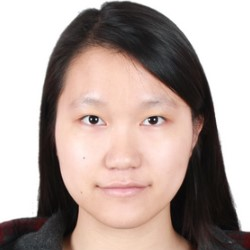Recent Advances in Computational Intelligence and Its Applications
A special issue of Mathematics (ISSN 2227-7390). This special issue belongs to the section "Mathematics and Computer Science".
Deadline for manuscript submissions: closed (31 December 2022) | Viewed by 22368
Special Issue Editors
Interests: evolutionary computation; deep reinforcement learning
Special Issues, Collections and Topics in MDPI journals
Interests: evolutionary computation; graph neural network
Special Issues, Collections and Topics in MDPI journals
Special Issue Information
Dear Colleagues,
Computational Intelligence (CI) is an evolving field that develops or applies a set of nature-inspired methodologies and algorithms to address complex problems in practice. It encompasses different computational paradigms, such as evolutionary computation, swarm intelligence, fuzzy systems, artificial neural networks, and deep learning systems. The methodologies and algorithms are being widely used to handle the complex engineering problems to which the mathematical or traditional modeling methods are ineffective.
The purpose of this Special Issue is to gather a collection of latest studies in CI and the related fields, from either theoretical or practical perspectives. We welcome new or improved methods to solve problems of optimization, learning, and decision support. Particular interest is also paid to the applications of CI to practical fields like intelligent transportation, social networks, and the Internet of Things. We invite authors to submit research articles and/or review articles that fit this purpose.
Prof. Dr. Yue-Jiao Gong
Prof. Dr. Ting Huang
Guest Editors
Manuscript Submission Information
Manuscripts should be submitted online at www.mdpi.com by registering and logging in to this website. Once you are registered, click here to go to the submission form. Manuscripts can be submitted until the deadline. All submissions that pass pre-check are peer-reviewed. Accepted papers will be published continuously in the journal (as soon as accepted) and will be listed together on the special issue website. Research articles, review articles as well as short communications are invited. For planned papers, a title and short abstract (about 100 words) can be sent to the Editorial Office for announcement on this website.
Submitted manuscripts should not have been published previously, nor be under consideration for publication elsewhere (except conference proceedings papers). All manuscripts are thoroughly refereed through a single-blind peer-review process. A guide for authors and other relevant information for submission of manuscripts is available on the Instructions for Authors page. Mathematics is an international peer-reviewed open access semimonthly journal published by MDPI.
Please visit the Instructions for Authors page before submitting a manuscript. The Article Processing Charge (APC) for publication in this open access journal is 2600 CHF (Swiss Francs). Submitted papers should be well formatted and use good English. Authors may use MDPI's English editing service prior to publication or during author revisions.
Keywords
- evolutionary computation
- swarm intelligence
- fuzzy systems
- artificial neural networks
- deep learning
- reinforcement learning
- heuristics and metaheuristics
- data-driven optimization
- intelligent transportation systems
- vehicle routing
- vehicle dispatching
- traffic time estimation
- traffic volume prediction
- traffic signal control
- itinerary planning
- social network analysis
- community detection
- network influence maximization
- task assignment in IoT
- resource allocation in IoT






